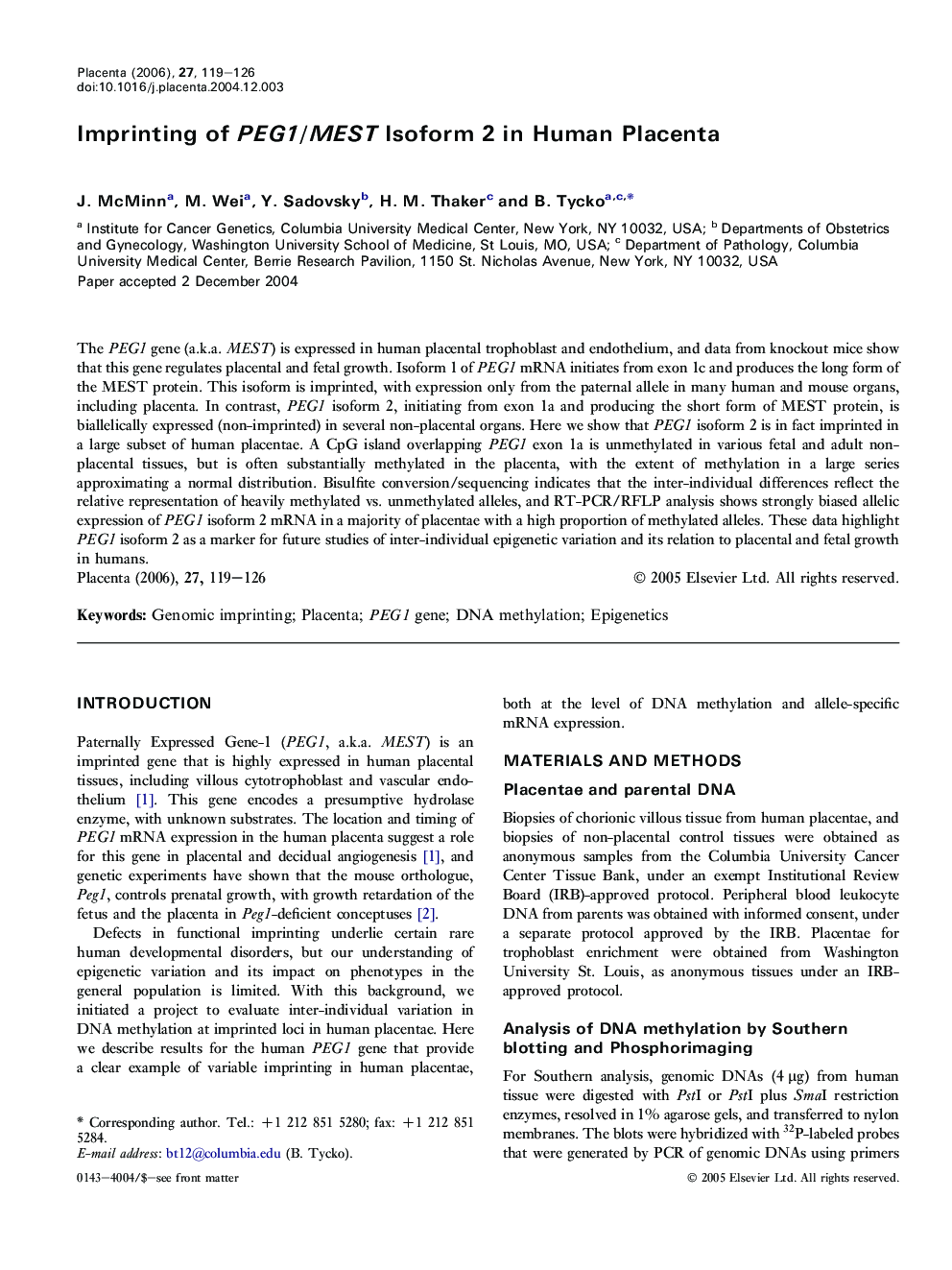| Article ID | Journal | Published Year | Pages | File Type |
|---|---|---|---|---|
| 2790153 | Placenta | 2006 | 8 Pages |
The PEG1 gene (a.k.a. MEST) is expressed in human placental trophoblast and endothelium, and data from knockout mice show that this gene regulates placental and fetal growth. Isoform 1 of PEG1 mRNA initiates from exon 1c and produces the long form of the MEST protein. This isoform is imprinted, with expression only from the paternal allele in many human and mouse organs, including placenta. In contrast, PEG1 isoform 2, initiating from exon 1a and producing the short form of MEST protein, is biallelically expressed (non-imprinted) in several non-placental organs. Here we show that PEG1 isoform 2 is in fact imprinted in a large subset of human placentae. A CpG island overlapping PEG1 exon 1a is unmethylated in various fetal and adult non-placental tissues, but is often substantially methylated in the placenta, with the extent of methylation in a large series approximating a normal distribution. Bisulfite conversion/sequencing indicates that the inter-individual differences reflect the relative representation of heavily methylated vs. unmethylated alleles, and RT-PCR/RFLP analysis shows strongly biased allelic expression of PEG1 isoform 2 mRNA in a majority of placentae with a high proportion of methylated alleles. These data highlight PEG1 isoform 2 as a marker for future studies of inter-individual epigenetic variation and its relation to placental and fetal growth in humans.
